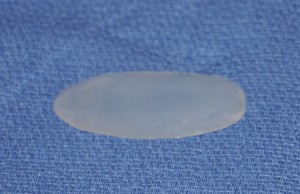While the skull is often envisioned as a perfectly smooth oval shape, it often isn’t. Due to how the cranial sutures fuse and intervening bones form, the surface of the skull is often irregular. Such irregularities often occur along the suture lines due to their early activity during development and closure right after birth. They are frequent sites of high spots, bumps and dips and indentations.
The sagittal suture is the longest of the cranial sutures due to its midline longitudinal course from the upper forehead to the top of the back of the head. Its midline position gives it a visible form in both the front and profile views. Any abnormalities along the fused suture line is most easily seen in the short haired or shaved headed male. One such sagittal deformity is a dip that appears between the front and back portions of the sagittal suture line. This is usually due to higher bone formation that occurs around the areas of the former front and back soft spots (fontanelles) as they initially fused together.


Skull augmentation can be done for a diverse group of skull defects even those as small as the sagittal dip.
Dr. Barry Eppley
Indianapolis, Indiana


